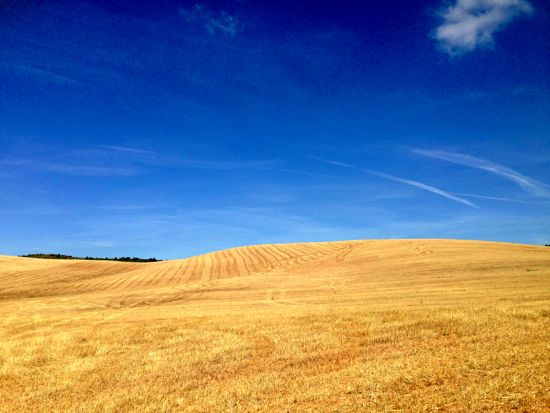So I completed the Camino de Santiago de Compostela almost two months ago now and I’m only just starting to process it — mainly because of all the travel I’ve been doing since then and now. It was an incredible travelling experience — the sort of experience I think many travellers simply miss out on.

The Camino de Santiago is a walk to the Spanish city of Santiago and it’s been a dream of mine for some years now. You can start walking from wherever you want really, but the most popular places are either 100km away in the town of Sarria or 780km away across the Pyrenees in the town of St Jean Pied-de-Port in France! I chose the one from France and completed the walk in a lazy 33 days.
People often ask how it’s possible to simply walk from one end of a country to another without some sort of support crew and the answer is quite straightforward really. You wake up, put on your shoes and walk until you’ve had enough. That’s it. There are always cheap hostels to stay in, there is a walking track of sorts and you simply walk. Every single day.

The spirit of the walk is part pilgrimage to the Cathedral in Santiago part losing yourself for a month part “what am I doing here” — but every person does it for their own reason, in their own time and for themselves. And that’s what’s so cool about it. Despite meeting up with plenty of other walkers, you’re still responsible from getting yourself from A to B every day and as such you really are walking your own journey.
Day one of the walk for me was up over the Pyrenees and into Spain. It was a fabulous introduction into what lay ahead — fantastic scenery, wonderful people, brutal adventure. To be honest, the first day wasn’t as hard as expected, but it was difficult to imagine being able to keep that sort of intensity up for a whole month. The very next day the difficulty of the journey became real when I injured my knee. I didn’t do anything out of the ordinary — no funny twist, no weird bend. It just stopped working properly and became very sore. And I had to hobble and shuffle about 10km until I got to my accommodation. Not fun.

As the days wore on, that injury healed and other ones surfaced and never went away — blisters. Almost everyone I met on the Camino got blisters. It’s just part of the journey and finding a way to nurse them is the key to continuing your journey.
A typical day on the Camino for me involved waking up at 0630, throwing my clothes on and simply walking outside to look for the nearest bar serving breakfast. Many others arose at 0530 and hit the road to beat the heat, beat the crowds, find some solitude.

After a quick breakfast, it was time to get some KM under the belt and after a couple of hours it’d be time to stop for a second breakfast and some coffee. Walk a bit more, get tired, stop for lunch. By this stage the end of the day is usually in sight with only another 10km to walk. I’d usually aim to get to a hostel by about 3pm, but in the earlier stages when walking in excess of 25km, this sometimes turned into 4 or 5pm!
Much of the Camino is along dirt tracks in rural areas. To find which way to go, there are yellow way markers everywhere. Towns are usually spaced a few kilometres apart giving the journey quite a rural feel and the odd town brings welcomed respite.

One of the things which really surprised me about the walk was the friendships I made along the way. You very quickly recognise the same faces every day and those same people tend to bond over breakfast, lunch and dinner. It’s not even like you need to make an effort to make friends. You automatically become friends due to your shared experiences — pain, exhilaration, frustration. It’s fantastic!

So why should you do the Camino de Santiago? Because it’ll be the single most challenging walk you’ve ever done. You’ll get out of your comfort zone and battle all sorts of problems. It may well be the catalyst for change in your life!
And besides, there is nothing better than watching the sun rise every day for a month, watching scenery gradually change as you head west and noticing the sun rising later and later.

For me, it’s one of the great travel experiences out there. Not many people can say they walked 780km across a country. Now I can and I’m damn proud of it!
What do you think? Pretty cool walk or what?



